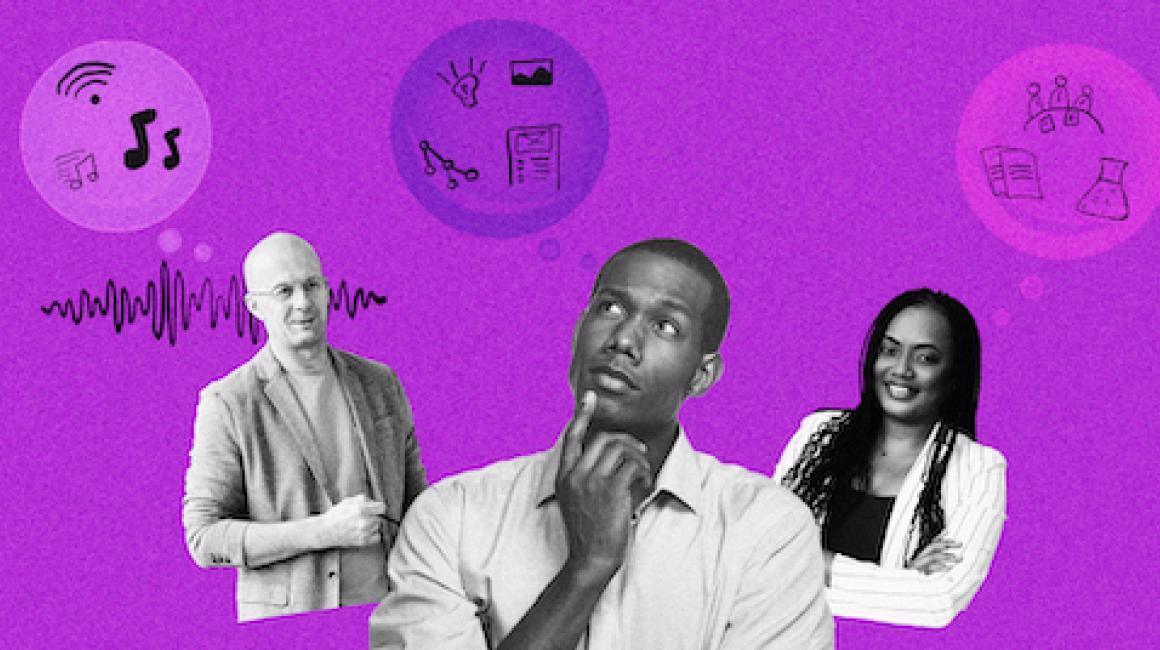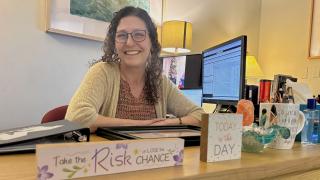“I want to help people get a better grasp of critical learning skills by looking at their different learning styles. We all have a variety of abilities,” she says. “Some of us have struggled with the transition to the remote environment and that’s to be expected. My goal is to use learning styles to give suggestions for creating a successful remote learning environment. Individuals can then take these tips and modify them to best fit their needs.”
Speaking with Lobdell recently, she shared five takeaways on learning styles and maximizing success.
People often associate themselves with auditory, kinesthetic and visual learning styles.
People have a mix of several learning preferences and styles, but they typically lean toward three main categories: Auditory, kinesthetic and visual.
Lobdell says the majority of people identify as visual learners. This means they do best in meetings or classes where there is a lot of information written on the whiteboard or handouts are provided. It’s also why infographics and pie charts can be helpful in displaying information.
If someone talks to themselves or moves their lips when accomplishing tasks, they may have a stronger auditory ability. She says learners who prefer this style use sounds or voice-oriented information to help them learn and thrive in lecture-style classes. To help prepare for a presentation, they may read their notes out loud. Or they solve problems by talking them through.
Students with stronger kinesthetic — meaning hands-on — abilities often prefer labs, flash cards and group projects. Clues to knowing if someone falls into this group: Rewriting critical information several times to deepen the learning process or connecting information with a physical act.
Want to know more about the individual styles, but can’t attend Lobdell’s presentation? Lobdell says to contact her about giving an office or class presentation, which includes an individual assessment tool.
It’s about looking for ways to make the most of your abilities.
Lobdell says auditory learners often flourish in foreign language learning. Chemists and engineers are often kinesthetic learners. And visual learners do well in design, composition or business.
But that doesn't mean someone needs to limit her or himself — there’s always room for growth.
“Once you learn what kind of learner you are, lean into it. For example, I’m an auditory learner. I might not always get visual slides, but I can make recordings and re-listen. Use your strengths to turn a challenge into an opportunity.”
Consider incorporating different activities into the learning environment.
Research shows there’s some debate on whether the learning styles model is helpful or a neuromyth — but having a variety (visual, hands-on, auditory, etc.) of activities in a learning environment is scientifically supported. “Mixing things up is an attention booster. When you pay closer attention, you learn better,” Lobdell says.
Here are some ideas:
• To help visual learners, incorporate videos and written work assignments.
• Auditory learners do best when there’s a voiceover with notes or when there is an online recording that they can revisit.
• Give an experience to the kinesthetic learners by incorporating hands-on activities into your lessons. Share simulation scenarios, have them make a video or create a project.
Lobdell says many faculty members are already doing these things. If you have a helpful tip you’d like to share, please let her know. She’s looking to compile tips to share online and during future presentations.
Build in checkpoints for studying, teaching or running a meeting.
Whether you are remote or in person, Lobdell suggests incremental learning “speedbumps.” She says this helps both the teacher and learner because it gives a moment to stop, ask questions and evaluate how everyone is doing with the new information. “If 10 minutes goes by and you haven’t heard anything, ask if there is anything that needs clarified. Or before you move onto the next idea, ask if there is something you should go back over. When you ask, actually stop to see if people are getting it.” She says if presenting information via Google Meet or Zoom, look to see if people clicked to “put their hand up” or added comments.
This tip works for solo learning efforts too. She says while studying or conducting research, add in breaks. She said all minds wander no matter the learning style and these checkpoints also serve as a way to re-focus.
Ask for help when it is needed.
Lobdell says this is the most important step — let people know when you are struggling.
She says professors are understanding and can help if students clue them into what’s happening behind the scenes and campus has many success resources that include tutoring options, counseling services and academic advising.
In addition, Lobdell says UM-Dearborn’s Disability Services staff knows the learning diversity across campus and — when resources are needed — want to create a more equitable and inclusive learning environment for all.
Learn more about Disability Services resources or Disability Awareness Month by contacting Cathy Sidor.





